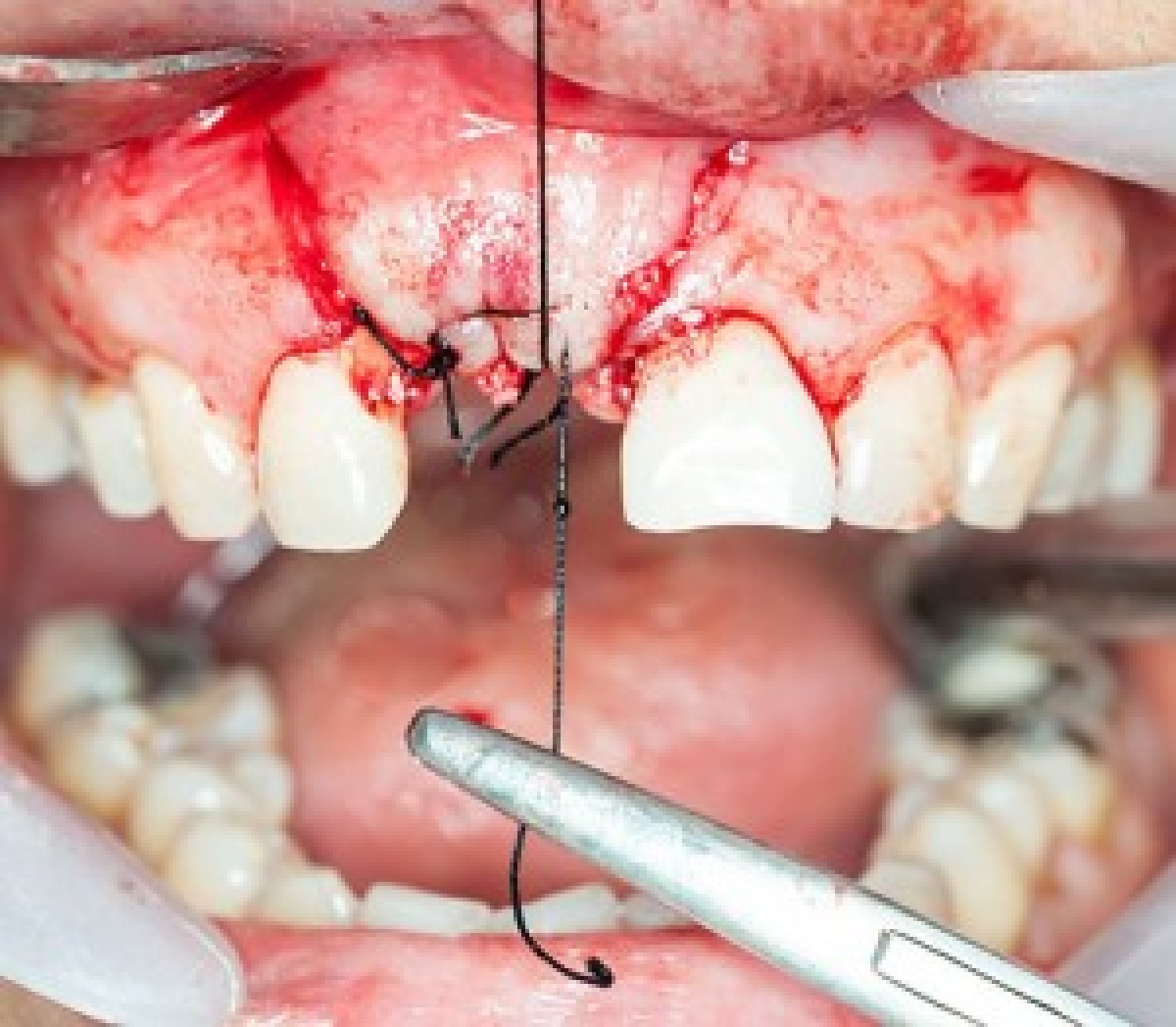
Preserve the alveolar ridge after a dental extraction
Lara Figini
The extraction of a dental element, in addition to having a direct impact on the quality of life, initiates a cascade of biological events resulting from alterations in the homeostasis and structural configuration of existing periodontal tissues, leading to progressive alveolar ridge atrophy, as demonstrated in the clinical studies by Chappuis et al. 2015; and Disciples et al. 2013. This physiological phenomenon was mainly attributed to the local inflammatory response following a surgical trauma, which involves a transient upregulation of osteoclastogenesis, combined with a complete deprivation of the biomechanical stimulation of the alveolar bone. Volume deficiencies of the alveolar ridge can interfere with subsequent tooth replacement therapy using fixed dental prostheses, or with implant-supported restorations.
Materials and methods
In a recent randomized controlled study, published in the Journal or Dental Research of April 2020, the authors evaluated the efficacy of ARP alveolar ridge preservation therapy with respect to unassisted healing of the post-extraction socket. A secondary objective was to evaluate the local phenotypic effect and the factors that play an important role in the volumetric reduction of the alveolar bone. A total of 53 subjects completed the study. Subjects were randomly assigned to either the control group, which involved only tooth extraction (EXT n = 27), or the experimental group, which performed tooth extraction using ridge-preserving therapy. ARP alveolar, with a technique that involves the combination of a graft with a particular particle bone filler and sealing with a non-absorbable membrane (dPTFE) (ARP Group n = 26) in the post-extraction alveolus. A range of clinical, linear, volumetric, and patient-reported outcomes were evaluated over the subsequent 14-week healing period.
Results
All linear bone assessments (horizontal, mesio-buccal and mesio-lingual reduction) were better in the ARP group than in the EXT group. Volumetric bone resorption was also significantly higher in the control group (mean ± SD: EXT = -, 8.83% ± 4.48%, ARP = -8.36% ± 3.81%, P <0, 0001). Linear regression analyzes revealed that vestibular bone thickness at baseline time is a strong predictor of alveolar bone resorption in both groups. No significant differences were observed in terms of soft tissue contour alteration in either group. An additional bone augmentation was deemed necessary to facilitate implant placement in a prosthetically acceptable position in 48.1% of the post-extraction sites in the EXT group and only in 11.5% of the post-extraction sites in the ARP group. The evaluation of the postoperative discomfort perceived by the patients at each follow-up visit revealed a progressive decrease over time of the same, comparable between the groups.
Conclusions
From the data emerging from this randomized study, which must be confirmed in other similar studies, it can be concluded that ARP therapy ensures more effective maintenance of alveolar bone after tooth extraction, reducing the estimated need for further bone augmentation at the time of implant placement.
For additional information: Efficacy of Alveolar Ridge Preservation: A Randomized Controlled Trial
 Related articles
Related articles
Periodontology 22 January 2025
The transition from a tooth requiring extraction to its replacement (with a dental implant) requires a series of clinical decisions related to timing, approach, materials, cost-effectiveness and the...
Oral surgery 17 January 2025
Minor oral surgery or dental extractions (oral or dental procedures) are widely performed and can be complicated by hazardous oral bleeding, especially in people with an inherited bleeding disorder...
Products 16 January 2025
Neoss Launches NeoGenix Extraction Allograft for Simplified Bone Regeneration
Neoss Inc., a leading innovator in dental implant solutions and digital workflows, is excited to extend its line of biomaterials with the NeoGenix Extraction Allograft.
Products 13 November 2024
Neoss Launches NeoGenix Extraction Allograft for Simplified Bone Regeneration
Neoss Inc., a leading innovator in dental implant solutions and digital workflows, is excited to extend its line of biomaterials with the NeoGenix Extraction Allograft.
Implantology 11 November 2024
Digital Device in Postextraction Implantology: A Clinical Case Presentation
The aim of this work is to describe a case of immediate implant placement after extraction of the upper right first premolar, with the use of CAD/CAM technology, which allows an early digital...
 Read more
Read more
Editorials 10 October 2025
With proud smiles and crisp white coats, ninety-three learners from the DDS Class of 2029 and the International Dentist Pathway Class of 2028 marked the start of their dental careers at the UCSF...
Periodontology 10 October 2025
Continuous professional development (CPD) in Periodontology refers to the overall framework of opportunities that facilitate a life-long learning practice, driven by the learner-practitioner and...
TheraBreath, the #1 alcohol-free mouthwash brand in the U.S.*, has introduced a new line of dentist-formulated, clinically tested toothpastes designed to support professional oral care...
News 10 October 2025
New officers and trustees were installed at the Minnesota Dental Association’s Leadership Conference on September 19 in Minneapolis.
News 10 October 2025
Smartee Denti-Technology today announced that Professor Gang Shen, its Chief Scientist and Executive President of TaiKang ByBo Dental, has once again been named to the World’s Top 2% Scientists...















